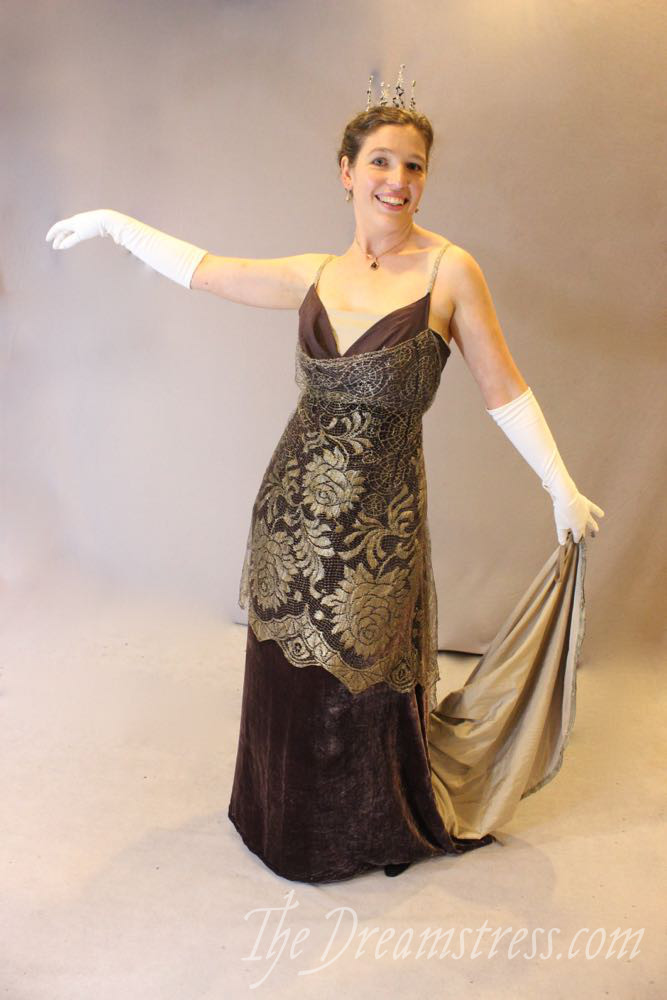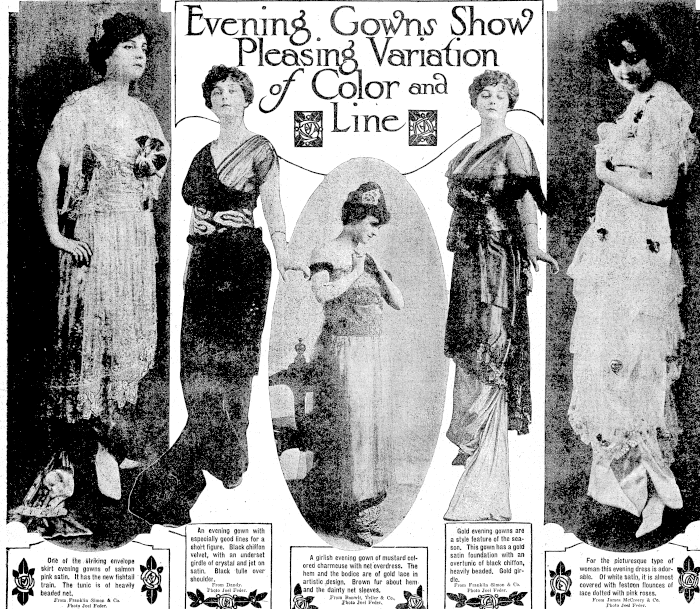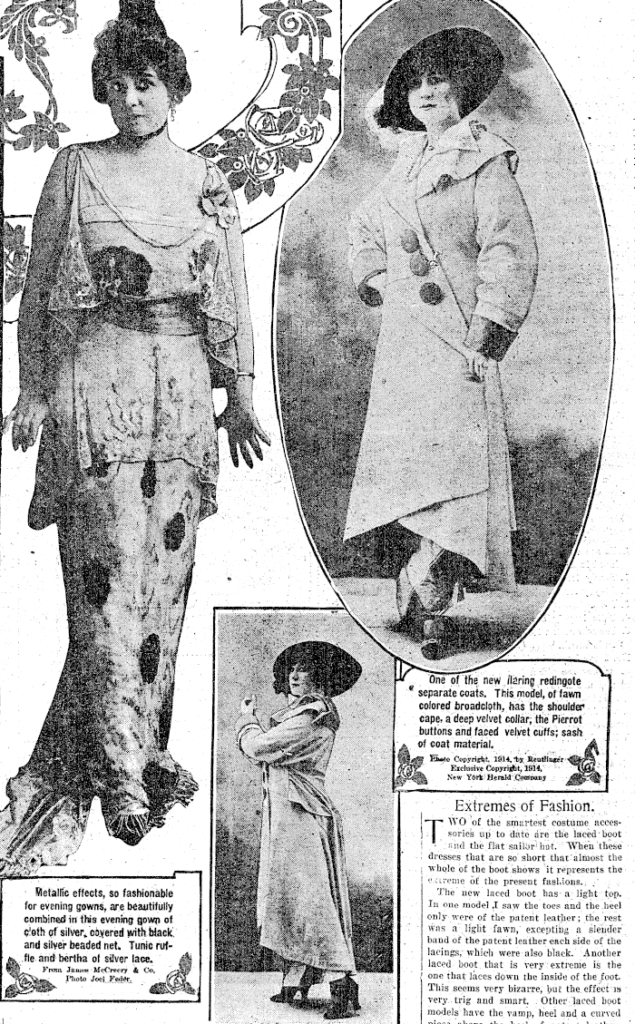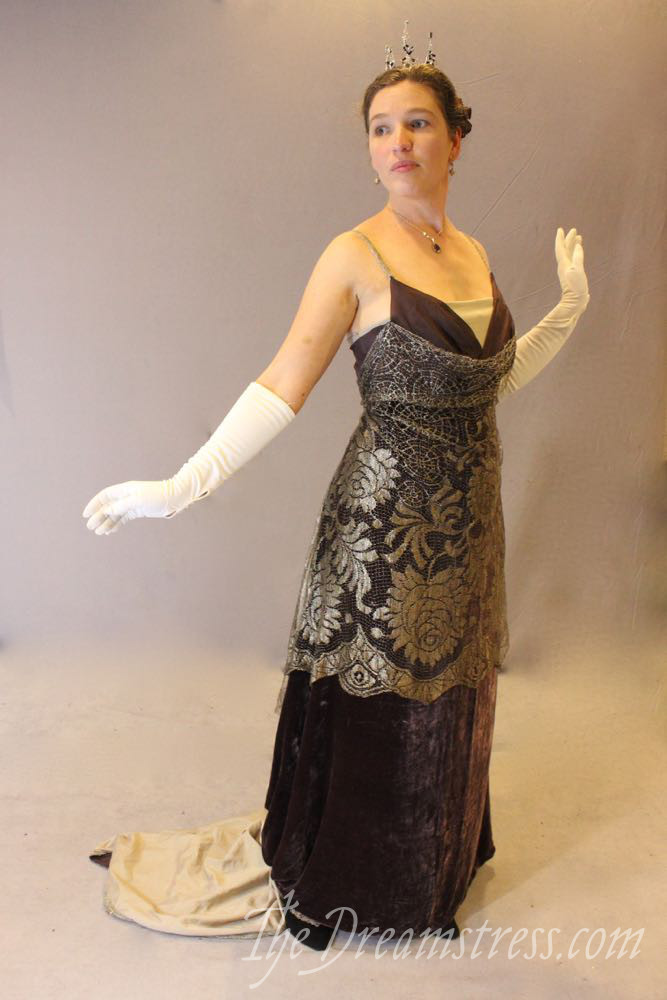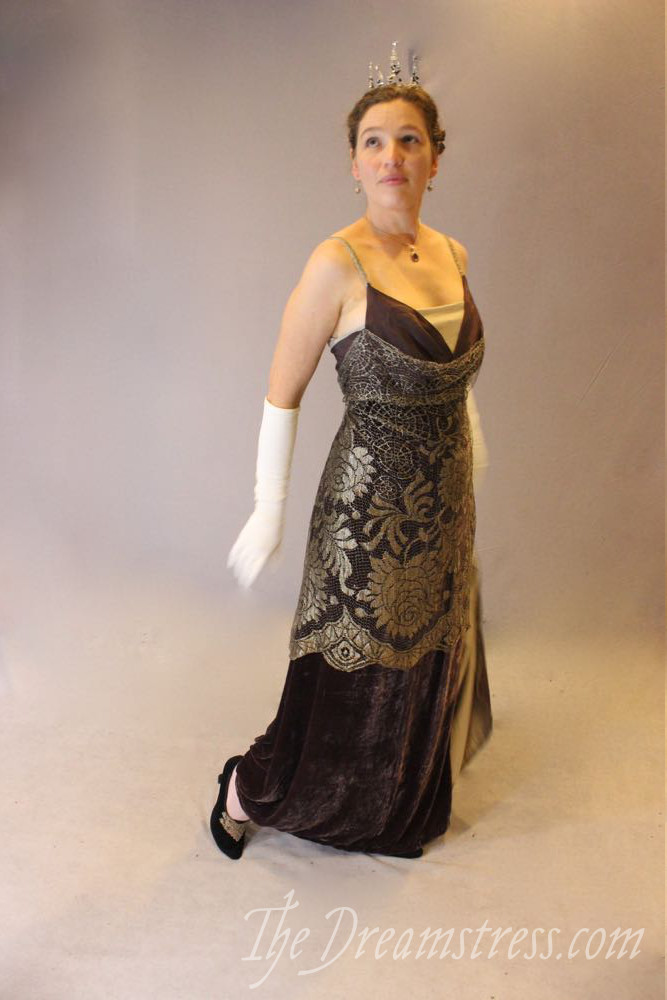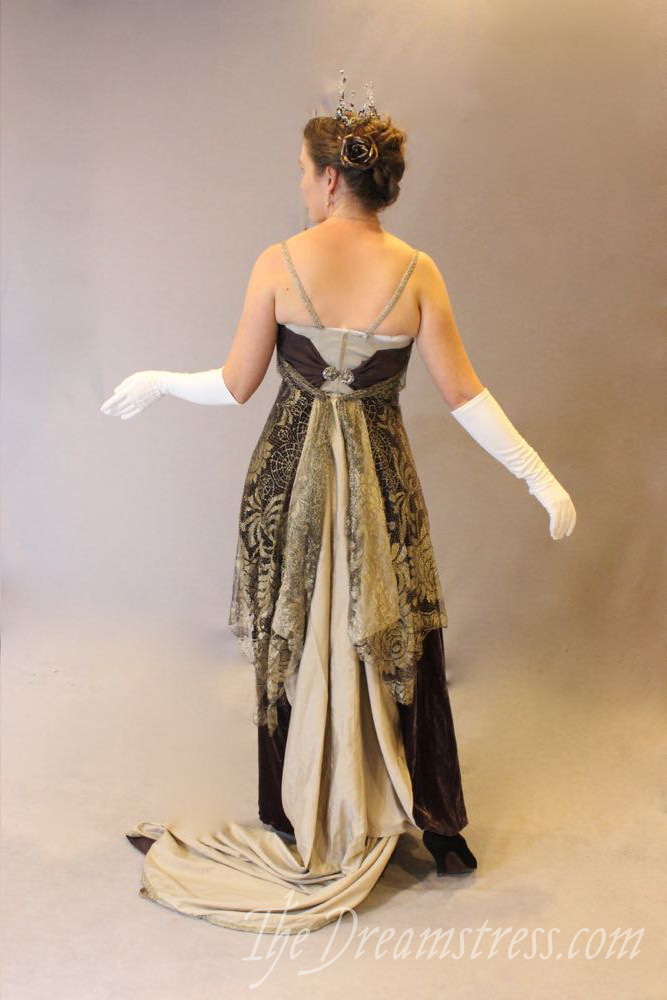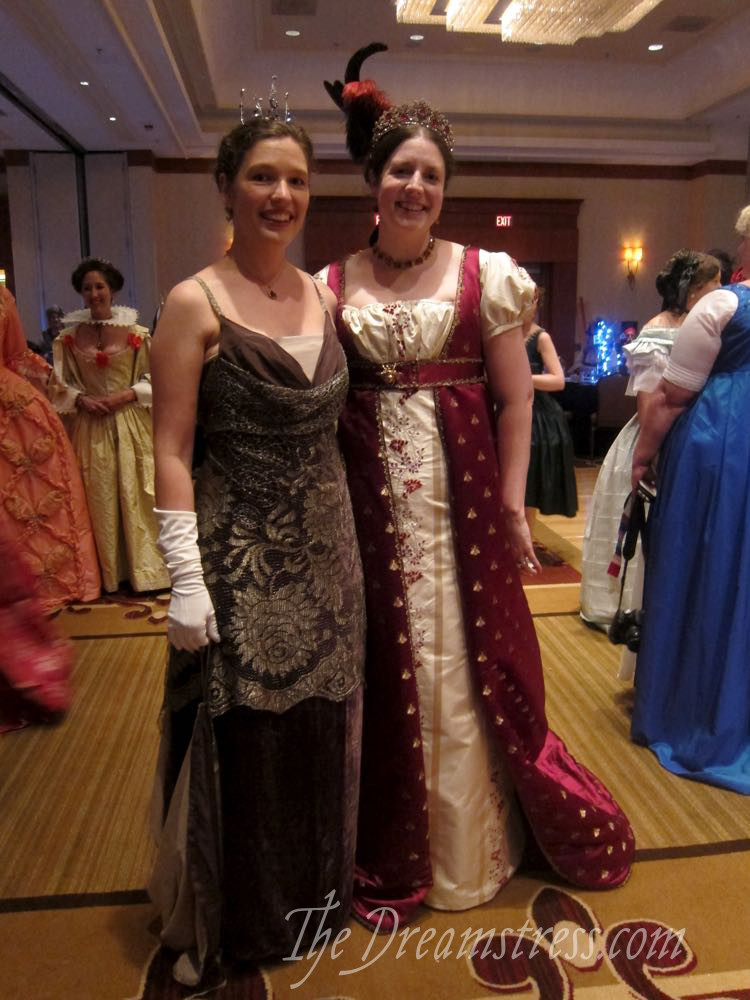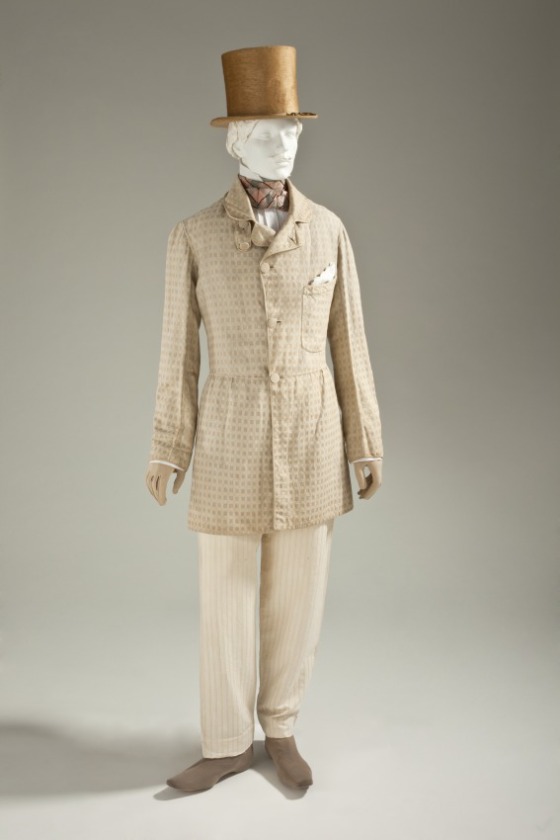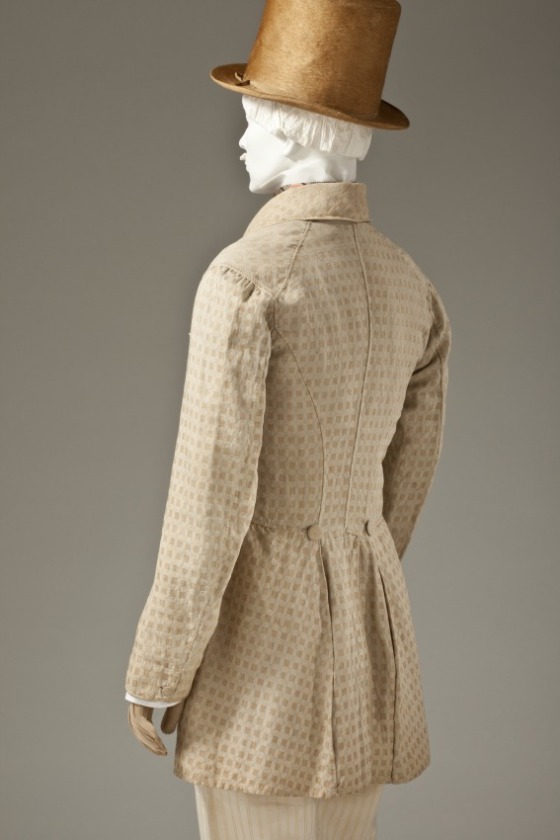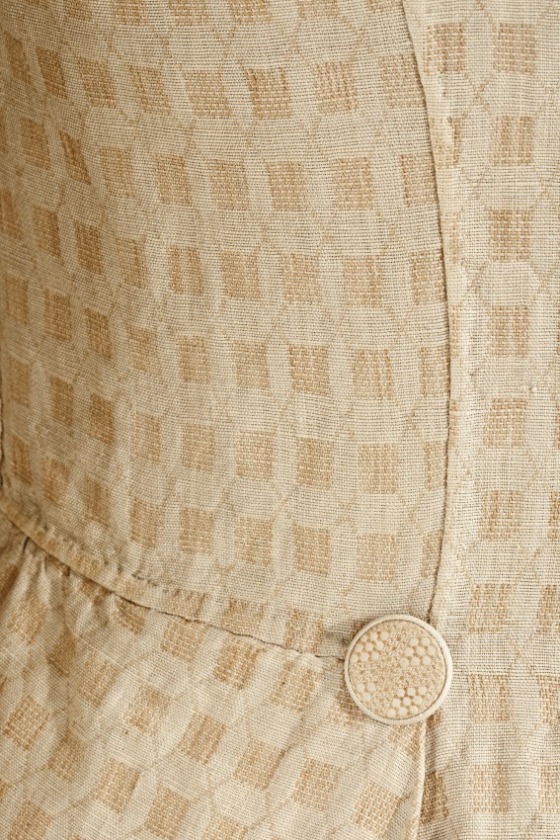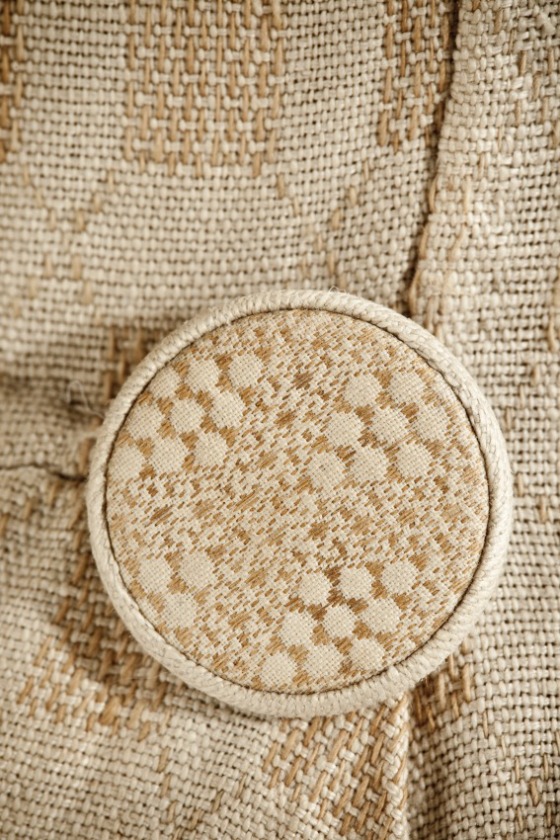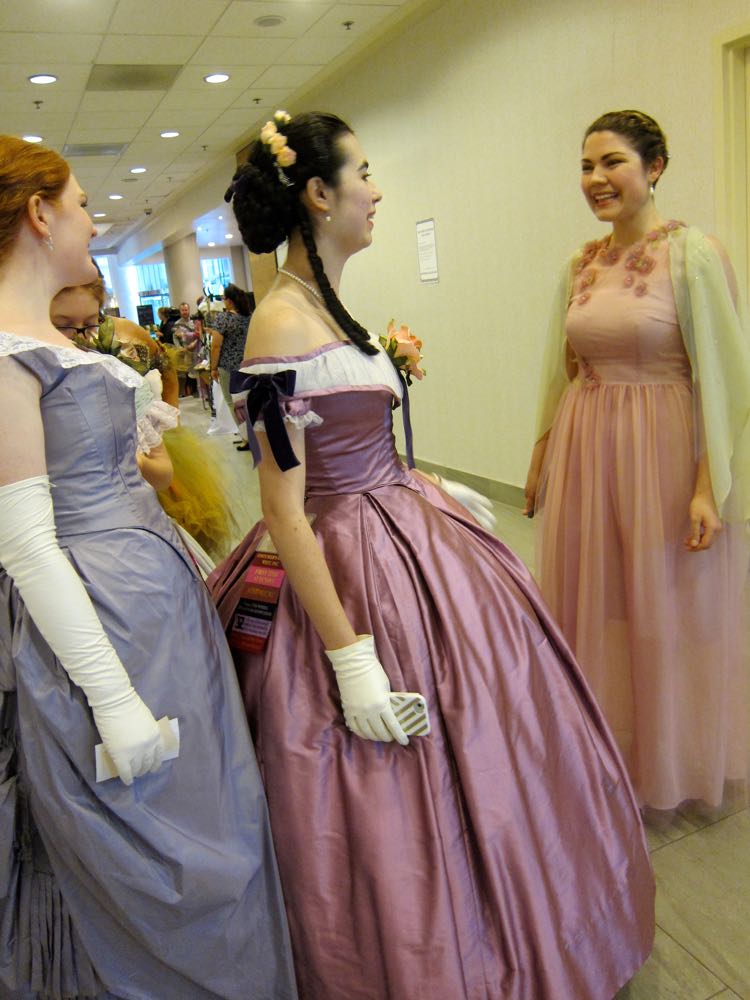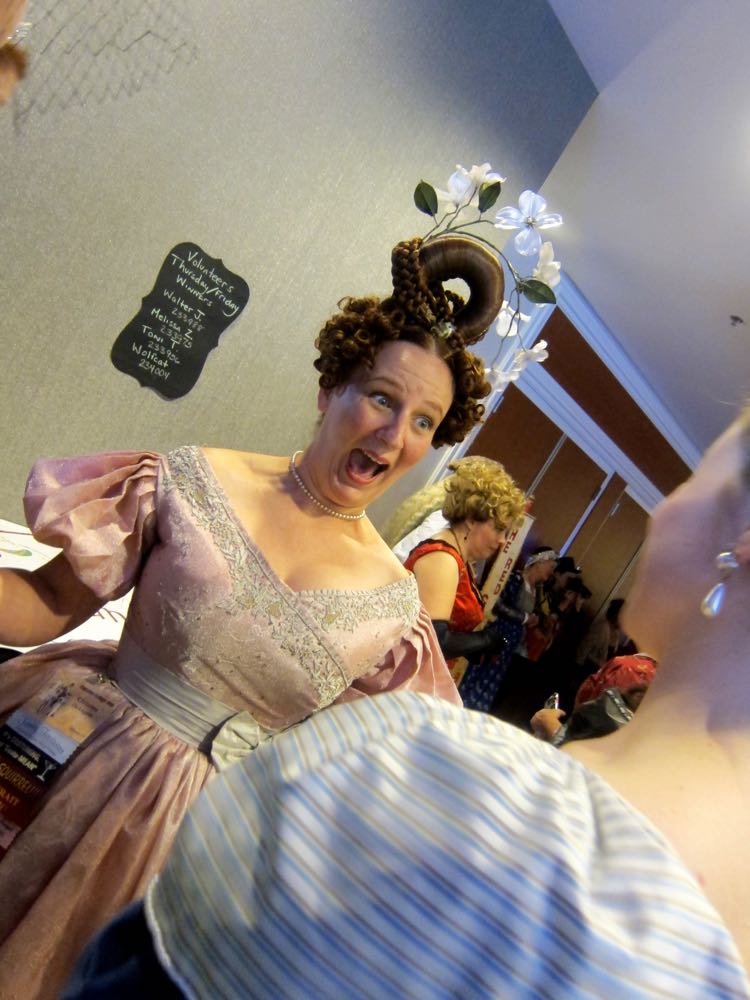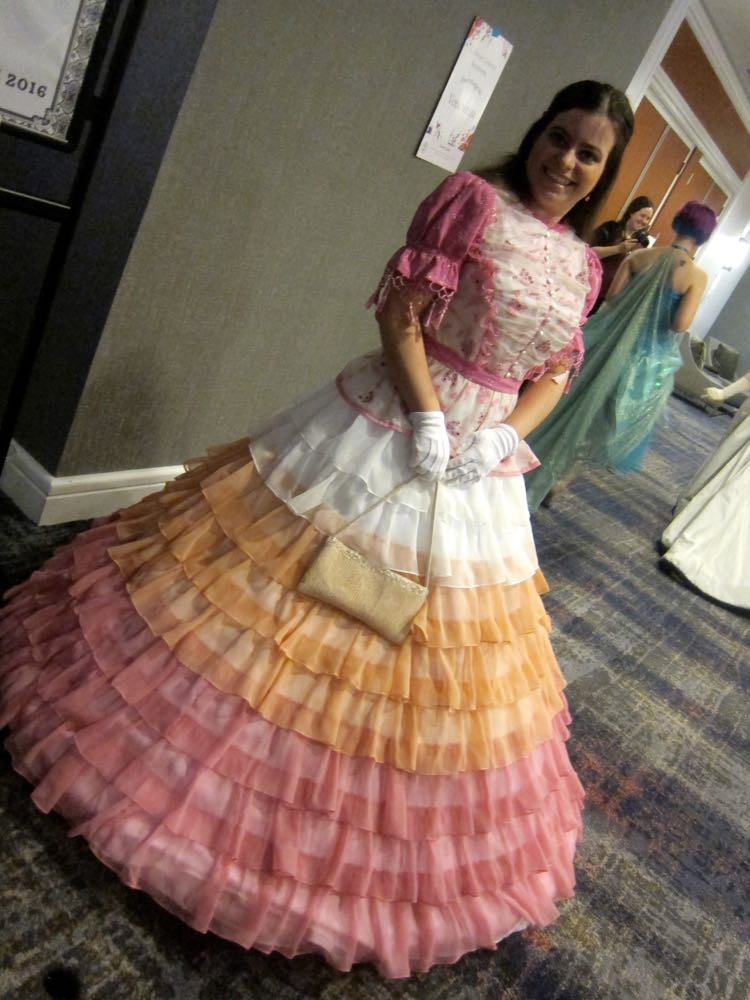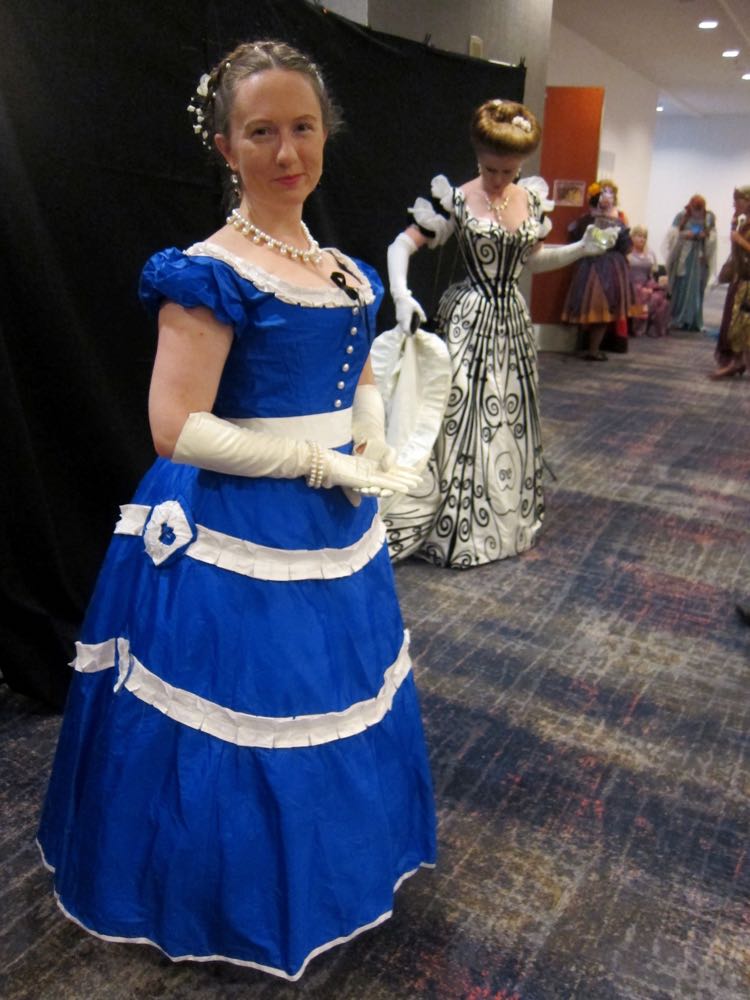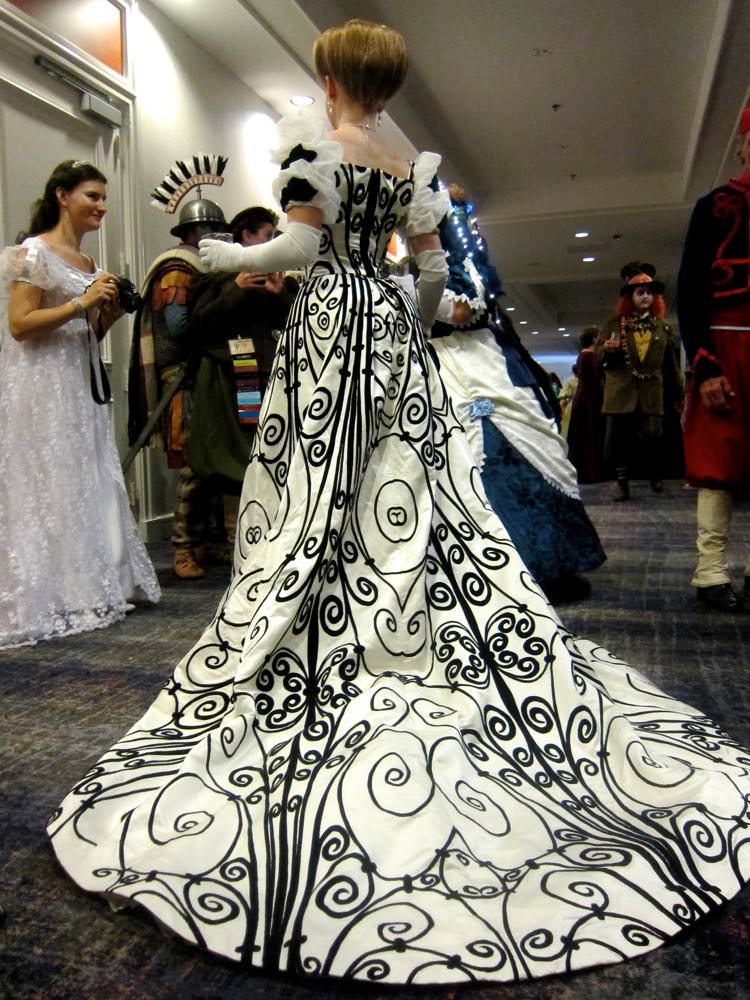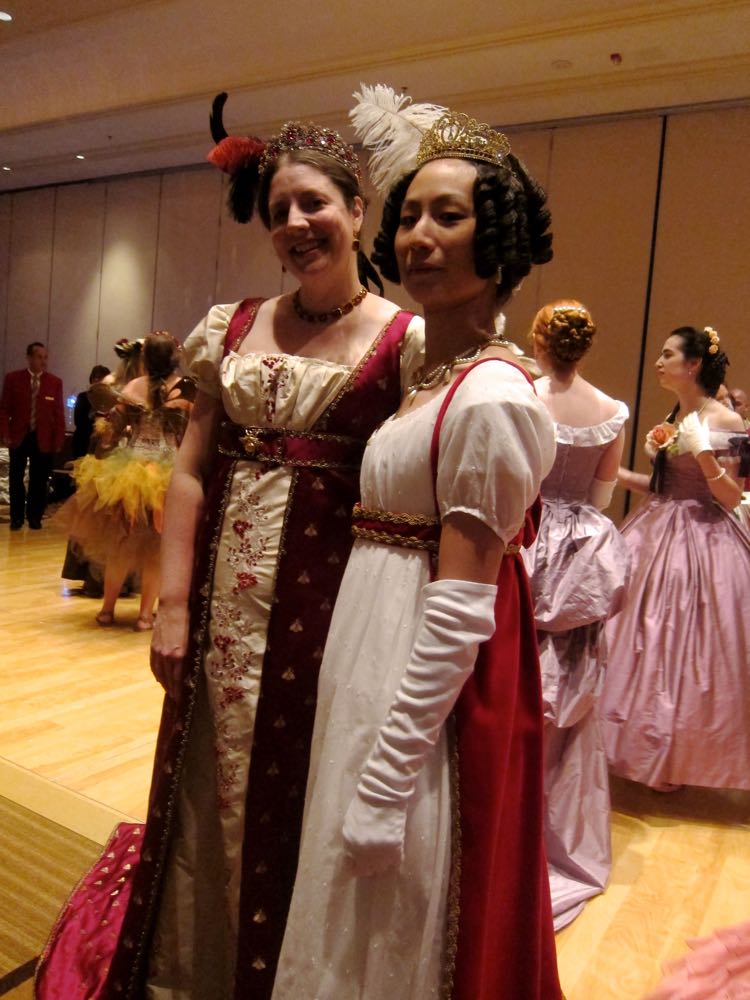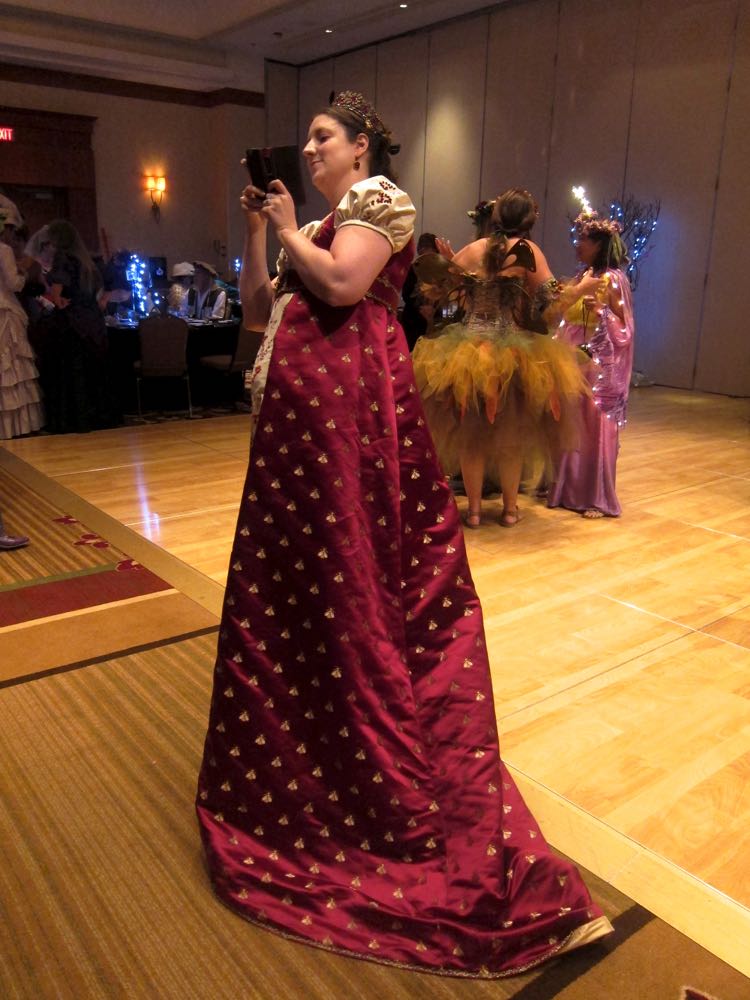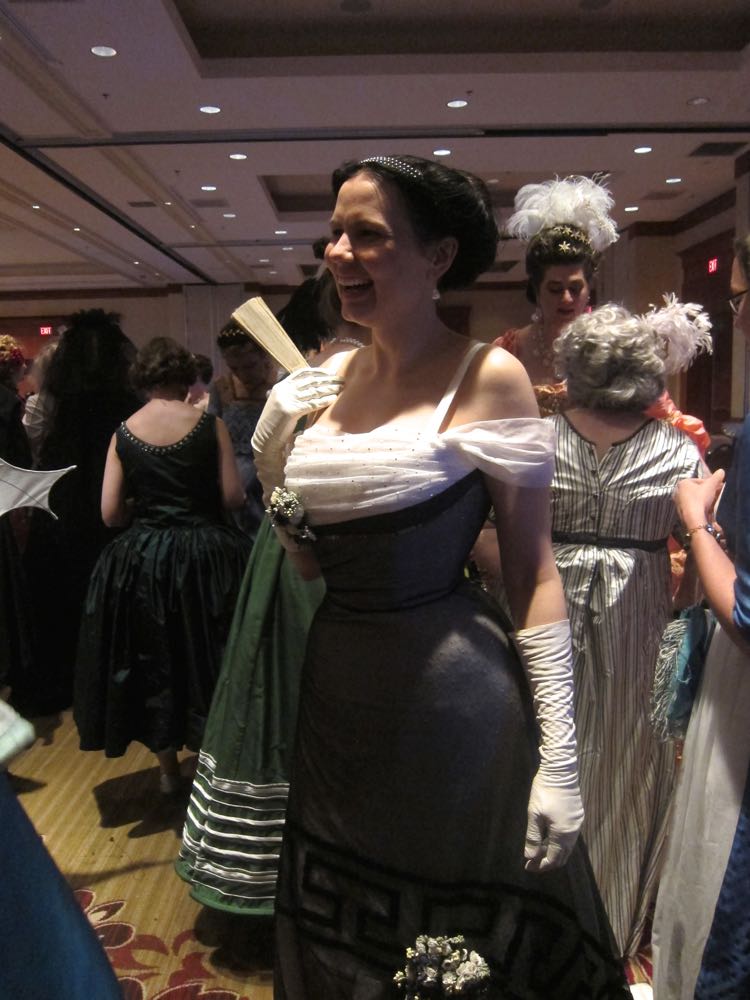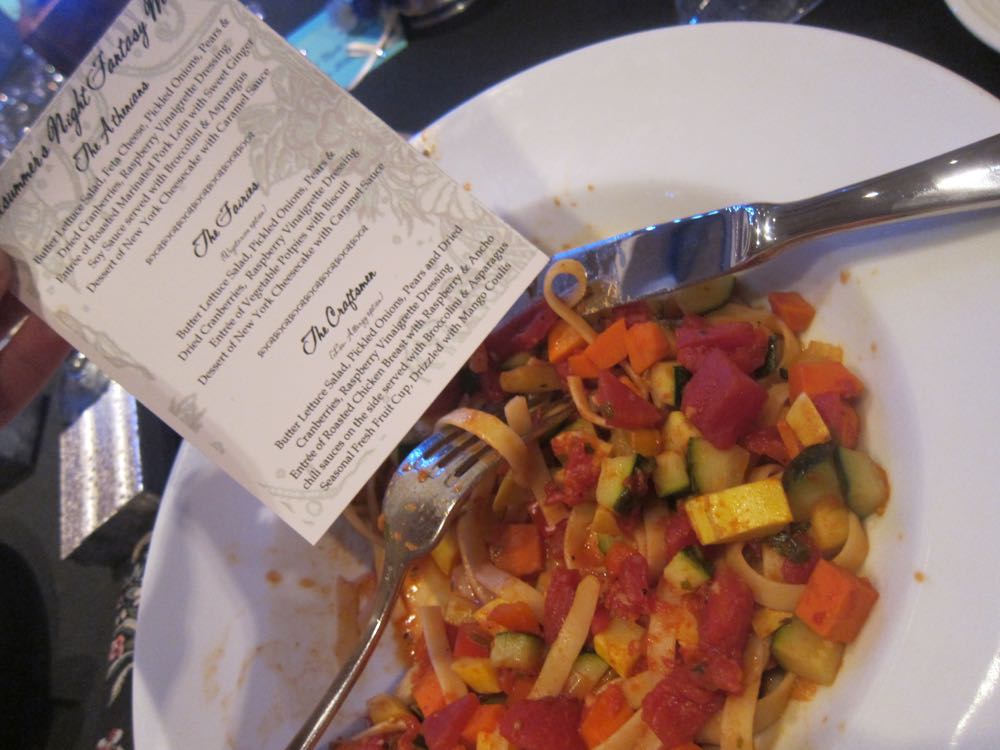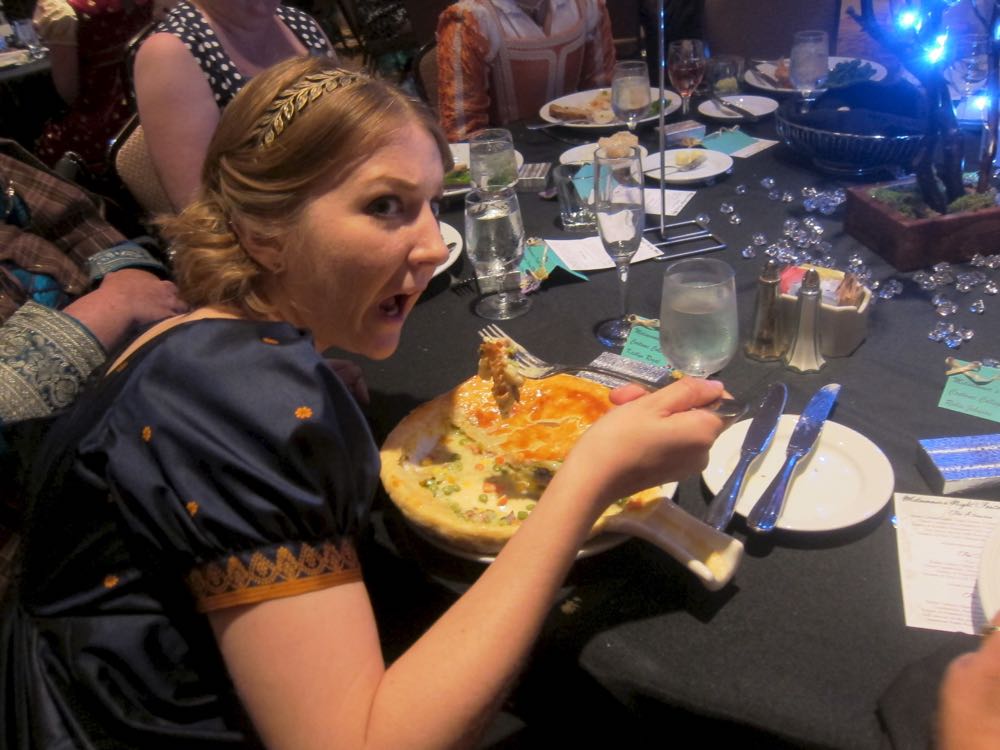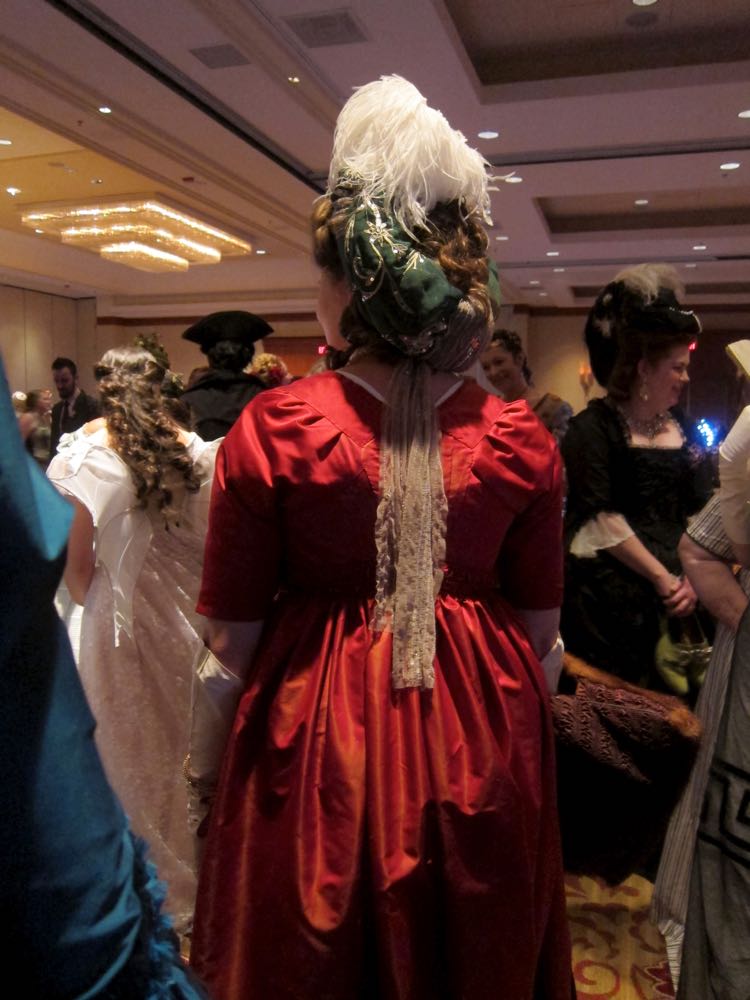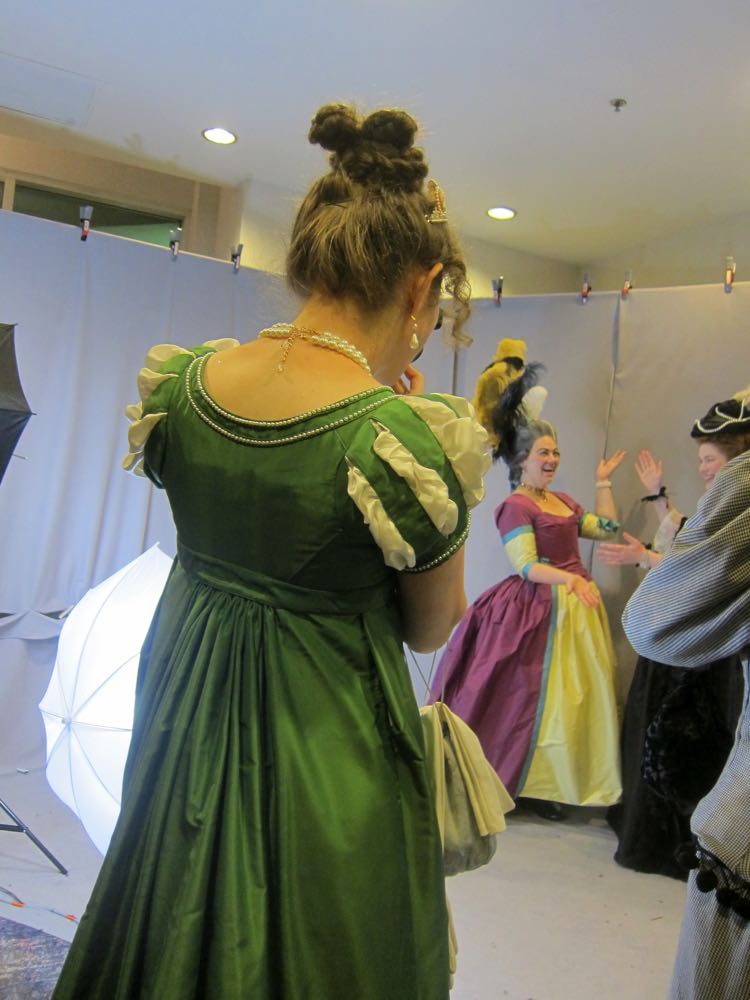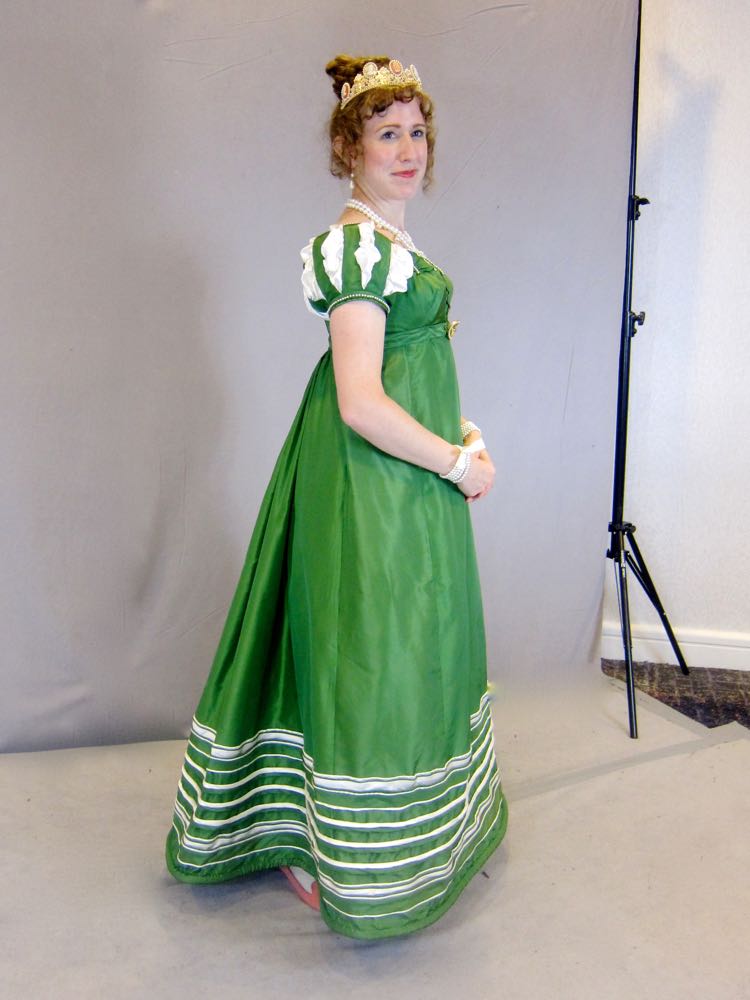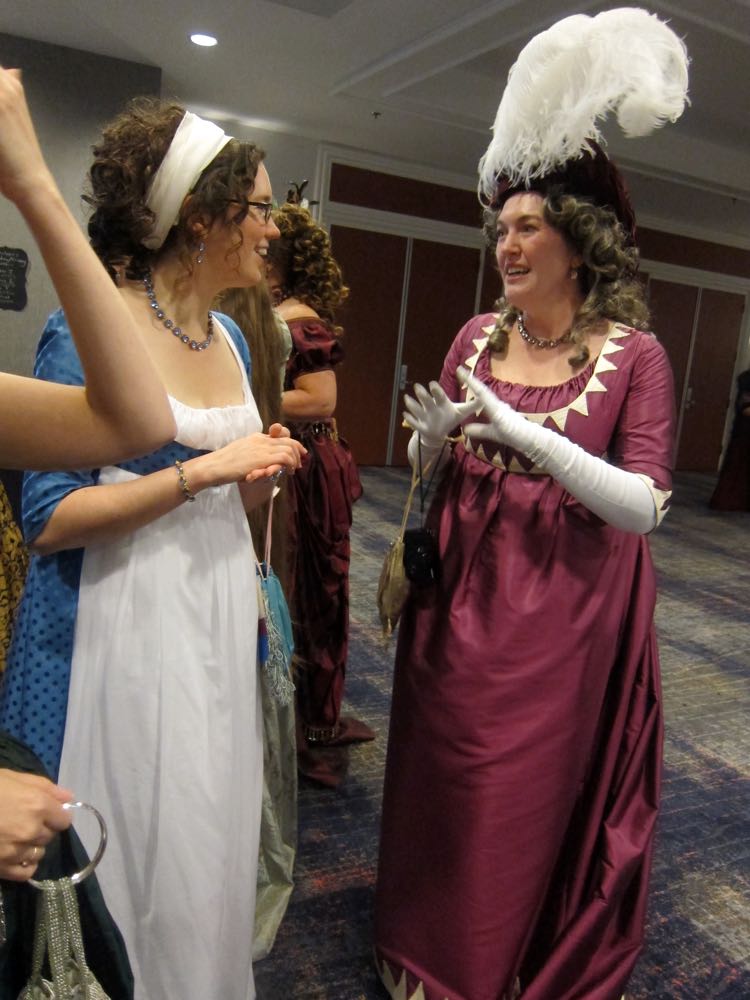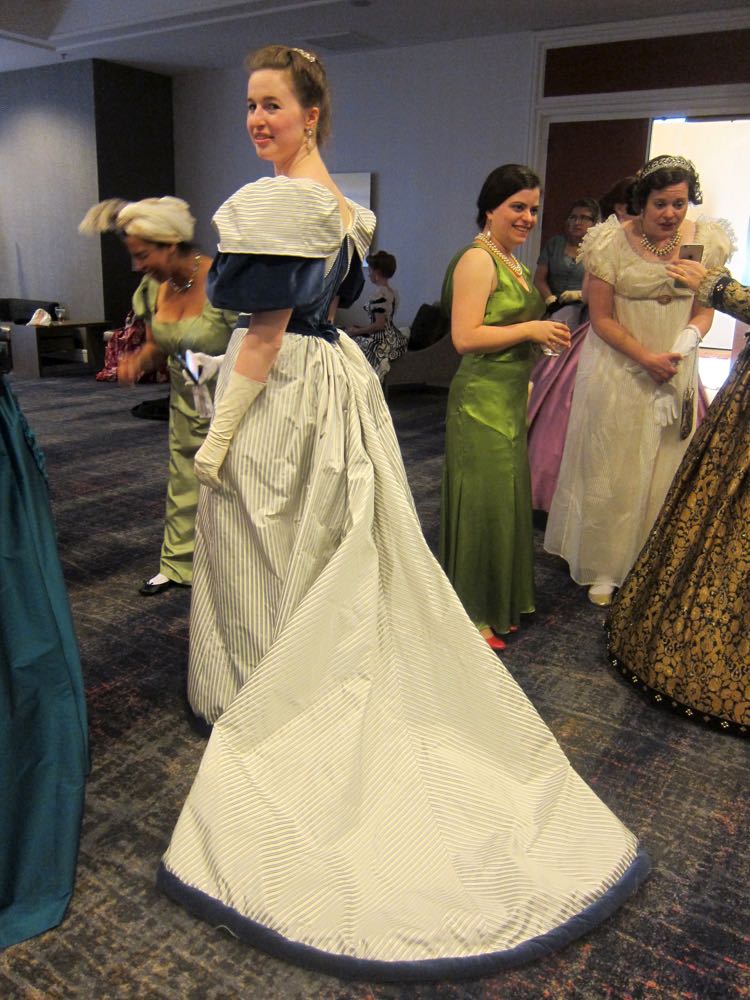While it was tempting to just wear old things for Costume College, and not stress about making new items, it was also tempting to try to make all the things. I compromised by only making one new gown: a 1914-15 evening gown for the Gala Ball.
I couldn’t really not make this gown. I have an amazing 1910s metallic lace with a spiderweb and roses pattern* that I wore as my wedding veil, and it’s been sitting in my stash ever since, waiting for the perfect opportunity to be made into a dress. With the theme of the Gala being ‘A Midsummer Nights Dream’, using it for a cobweb fairy dress was practically mandatory!
1914-15 was also a shoe-in for a time period. The mid-1910s (1914-19) is pretty much my all-time favourite era, and, having done the Fortnight in 1916 project, a dress of that era seemed more than appropriate. Rather than making a 1916 gown, I decided that something summer-before-the-war, or from the first months of the war, when fancy going-away balls were still the thing (at least in NZ), best suited my fabric, and the feeling I was going for.
I made the dress in less than four days. Let’s just say that it really helped to have a 1910s under-bodice pattern already fitted and sorted: everything else was just draped over that.
I’d originally planned to pair the gold lace with a green silk taffeta, but the lace ‘died’ over it, so I went rummaging around in my stash, and unearthed a dark grape silk velvet that I found for a song at an op-shop (and which I have very good reason to suspect is ex the costume shop of a certain well-known fantasy trilogy that was filmed in my neighbourhood…). Unfortunately there was only enough velvet for the skirt of the dress, so a mad-dash to my lovely local fabric stores three days before I left for California yielded a gorgeous piece of pale gold silk-cotton in the Fabric Warehouse $5 bin (I LOVE that bin!) and a meter of significantly-more-expensive grape purple silk crepe at The Fabric Store.
I didn’t use an exact garment or fashion plate for my source, but did what the fabric wanted to do, and used a number of fashion plates and extent garments of the era for inspiration. You can see my pinterest inspiration board here (though there are also inspiration pieces for another dress, so it’s slightly confusing but makes sense to me).
My main inspiration pieces were two gowns featured in New Zealand newspapers in early 1915.
First, the third gown from the left here:
And second, this evening gown:
I realised at the very last minute that airline lost-luggage insurance wouldn’t cover the lace, so had to unpick it, carry it in my carry-on, and sew it on once I arrived in California.
I paired the dress with my Nana shoes, white kid gloves, gold and silver drop earrings, a bronze rose in my hair, an amazing vintage amethyst necklace that Emily insisted on lending me, and an amazing-in-a-different way crown that I found in the CoCo marketplace.
Formal photos are courtesy of Lauren of Wearing History. You can see her edits of the photos on her CoCo round-up post:
The back of the gown fastens with an elaborate collection of hooks, and a vintage buckle. I had a dreadful time finding suitable ribbons for straps, and finally settled on BRIGHT silver braid, painted gold with a fabric pen.
I wasn’t the only one thinking Cobwebs for the Gala: I met at least two others!
A Regency Cobwebs:
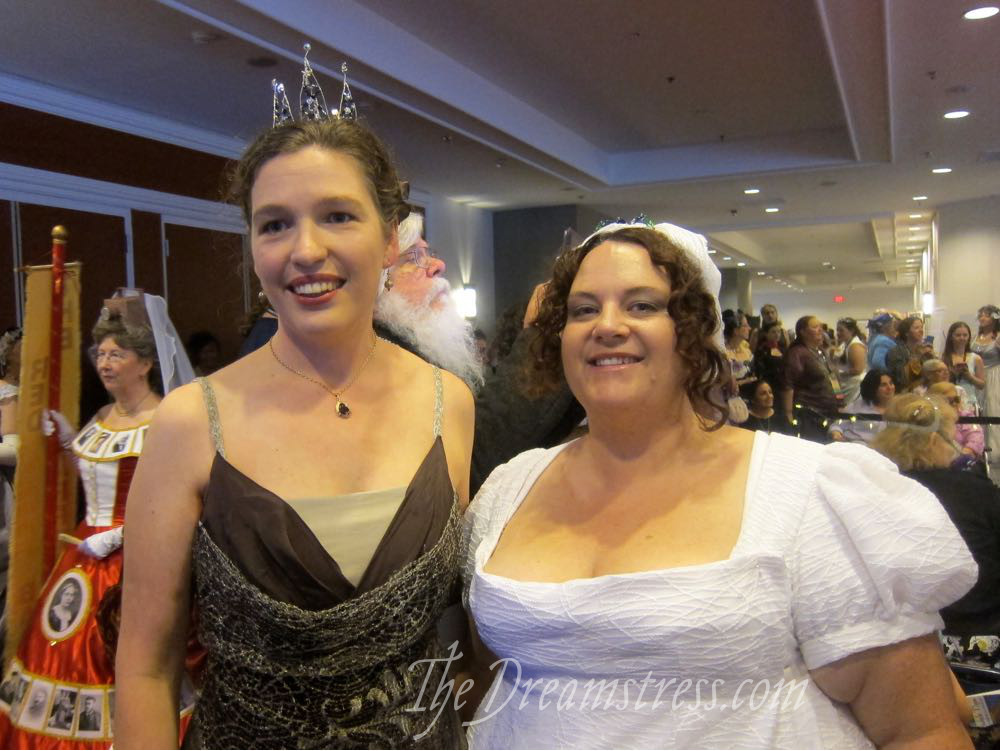 And a fantasy Cobweb (with an even better crown than me!):
And a fantasy Cobweb (with an even better crown than me!):
 And not a Cobweb, but how could I miss a spiders and bees photo:
And not a Cobweb, but how could I miss a spiders and bees photo:
And finally, though it’s just the lace, this definitely counts for the Historical Sew Fortnightly ‘patterns’ challenge!
What the item is: a 1914-1915 evening dress
The Challenge: #8 Pattern
Fabric/Materials: 1.5m of silk-rayon velvet ($4), antique gold lace (a gift, many years ago), 1.5m of silk-cotton blend ($5), .4m white cotton twill for the under-bodice ($1), 1m silk crepe ($24), 1m silk net (to line and support the train) ($20).
Pattern: My own, based on period examples. The under-bodice is primarily based on the Laurel Dress as patterned in Janet Arnold’s Patterns of fashion 1860-1930.
Year: May 1914-May 1915
Notions: silk and cotton thread, hooks and eyes, plastic whalebone boning, metal lace sleeve straps, metal lace train trim, vintage buckle.
How historically accurate is it? The construction is based on instruction given in Jane Fales’ 1917 Dressmaking, and is consistent with period examples. The straps aren’t the right material, and I’m not 100% happy with how the back fastenings worked out, so can only give it 70%.
Hours to complete: At least 23.
First worn: For the Costume College Gala Ball, Sat 30 July
Total cost: Under $60
* I spent a lot of time singing ‘small spider weave, on silver sleeve…’ as I draped and sewed this, though this dress really doesn’t have sleeves to speak of, and my crown ended up being silver, not gold!

